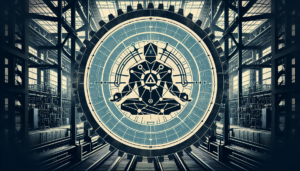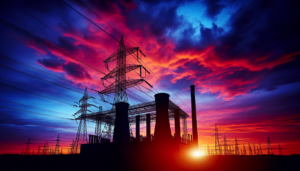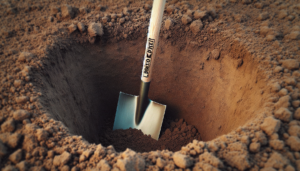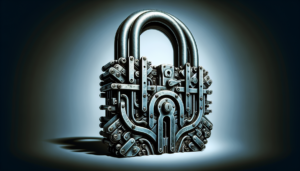
In today’s article, we will explore the fascinating topic of creating a fire-making kit specifically designed to adapt to various weather conditions. Whether you are an outdoor enthusiast, a survivalist, or simply someone seeking knowledge on this practical skill, understanding the intricacies of fire-making in different weather scenarios is essential. By equipping yourself with the right tools and techniques, you can confidently navigate through rainy days, icy temperatures, or gusty winds, ensuring the warmth and comfort provided by a well-started fire. So, let us embark on this journey together as we uncover the secrets behind crafting a reliable fire-making kit for any weather condition.
Types of Fire-making Kits
There are three main types of fire-making kits that you can consider when preparing for different weather conditions: the basic fire-making kit, the advanced fire-making kit, and the emergency fire-making kit. Each kit is designed to provide you with the necessary tools and supplies to start a fire in various environments and weather conditions.
Basic Fire-making Kit
The basic fire-making kit is a simple and essential kit that should be part of every outdoor enthusiast’s gear. It typically includes the essential tools and supplies needed to start a fire in most weather conditions. This kit is suitable for beginners or those who prefer a lightweight option.
Advanced Fire-making Kit
The advanced fire-making kit is a more comprehensive kit that includes additional tools and supplies to tackle more challenging weather conditions. This kit is designed for experienced outdoor enthusiasts who may encounter extreme weather conditions, such as heavy rain or strong winds.
Emergency Fire-making Kit
The emergency fire-making kit is specifically designed for emergency situations. It contains compact and lightweight tools and supplies that can be easily carried in a survival or emergency kit. This kit is essential for those who want to be prepared for unexpected survival scenarios or emergencies in various weather conditions.
Essential Tools and Supplies
Regardless of the type of fire-making kit you choose, there are five essential tools and supplies that should be included in every kit. These items are crucial for starting and maintaining a fire in different weather conditions.
Fire Starter
A fire starter is the most fundamental tool in your fire-making kit. It is a device or material that generates a spark or flame to ignite the tinder. Common fire starters include waterproof matches, ferrocerium rods, lighters, or even homemade fire starters such as cotton balls soaked in petroleum jelly.
Tinder
Tinder is a highly flammable material that ignites easily and quickly. It serves as the initial fuel for your fire and helps to transfer the flame to the kindling. Common types of tinder include dry grass, leaves, bark, or commercially available tinder such as fire-starting cubes or fire-starting sticks.
Kindling
Kindling consists of small, dry sticks or twigs that catch fire easily and sustain the initial flame from the tinder. It serves as the bridge between the tinder and the larger fuelwood. Selecting dry kindling is crucial, as wet or damp kindling can make fire-starting in challenging weather conditions more difficult.
Fuelwood
Fuelwood refers to larger pieces of wood that sustain the fire once it is established. It should be dry and preferably split into different sizes, from small fuelwood for the initial stages of the fire to larger pieces that provide a long-lasting and sustainable source of heat. Hardwood, such as oak or maple, is generally preferred for its longer burn time.
Ignition Source
The ignition source is the tool or method used to light the fire starter and ignite the tinder. It can be a readily available source such as a lighter or matches. Alternatively, you can also include a fire piston, magnesium fire starter, or other reliable ignition sources in your kit, depending on your preference and level of preparedness.
Considerations for Different Weather Conditions
Before assembling your fire-making kit, it is crucial to consider the weather conditions you may encounter. Different weather conditions can pose unique challenges when it comes to starting a fire. Here are some considerations for three common weather conditions: dry and hot weather, rainy and humid weather, and cold and windy weather.
Dry and Hot Weather
In dry and hot weather conditions, fire-starting can be relatively easier due to the availability of dry tinder and kindling. However, the risk of wildfires is higher, so it is important to exercise caution and follow any local restrictions or regulations. Ensure that you have a fire starter, tinder, kindling, fuelwood, and an ignition source suitable for these conditions.
Rainy and Humid Weather
Starting a fire in rainy and humid weather can be particularly challenging due to the dampness of the materials. It is crucial to have waterproof fire starters, such as waterproof matches or a dependable ferrocerium rod. Additionally, pack extra tinder and kindling, as these materials may require additional effort to ignite.
Cold and Windy Weather
Cold and windy weather conditions can make fire-starting a more demanding task. Strong winds can blow out flames, and the cold temperatures can make it challenging to keep the fire going. To combat these conditions, consider using windproof lighters or matches, and bring along additional layers of clothing or shelter to protect the fire from gusts of wind.
Fire-making Kit for Dry and Hot Weather
When preparing your fire-making kit for dry and hot weather conditions, consider the specific tools and supplies that are most effective in these environments.
Fire Starter for Dry Weather
In dry weather conditions, fire starters such as waterproof matches or a reliable lighter are typically sufficient. Make sure to pack enough fire starters, considering the potential need for multiple attempts or additional fires during your outdoor activities.
Tinder for Dry Weather
Dry grass, shredded bark, or specially designed fire-starting cubes are excellent choices for tinder in hot and dry conditions. Ensure that your tinder is stored in a waterproof container to prevent any moisture absorption.
Kindling for Dry Weather
Small twigs or dry leaves make excellent kindling in dry weather. Collect enough kindling to establish a strong and sustainable flame. Keep in mind that kindling should be readily available, so scout the area for suitable materials before starting your fire.
Fuelwood for Dry Weather
Choose hardwood such as oak, as it offers a longer burn time and provides substantial heat. Ensure that your fuelwood is dry and appropriately sized for your fire, considering the size and duration of the fire you intend to create.
Ignition Source for Dry Weather
A reliable lighter or waterproof matches are the recommended ignition sources for dry weather conditions. Carry multiple ignition sources to allow for backup in case one fails or gets wet.
Fire-making Kit for Rainy and Humid Weather
In rainy and humid weather conditions, it is imperative to have the right tools and supplies to overcome the challenges of starting a fire.
Fire Starter for Rainy Weather
Waterproof matches and lighters are essential in rainy weather. Consider investing in waterproof matches that can withstand wet conditions and still ignite. Alternative fire starters such as ferrocerium rods or magnesium fire starters can also be effective.
Tinder for Rainy Weather
Since finding dry natural tinder in wet conditions can be challenging, it is wise to carry commercially available fire-starting cubes or sticks designed for damp or wet environments. These specialized tinder products are usually impregnated with chemicals that allow them to ignite even in adverse weather conditions.
Kindling for Rainy Weather
Collecting dry kindling in rainy weather can be a daunting task. Pack extra dry kindling in waterproof containers or sealed plastic bags to ensure that you have enough dry material to ignite your fire.
Fuelwood for Rainy Weather
When gathering fuelwood in wet conditions, prioritize selecting larger and drier pieces. Split the wood into smaller sections to expose the dry interior and facilitate easier ignition. Additionally, consider using a tarp or other protective cover to keep the fuelwood as dry as possible.
Ignition Source for Rainy Weather
Having reliable ignition sources is crucial in rainy weather. In addition to waterproof matches and lighters, consider using a fire piston or a magnesium fire starter. These tools can provide a consistent spark even in wet conditions.
Fire-making Kit for Cold and Windy Weather
Cold and windy weather can make fire-starting more challenging, but with the right tools and supplies, you can overcome these difficulties.
Fire Starter for Cold Weather
In cold weather conditions, it is advisable to use windproof lighters or matches designed for cold environments. These fire starters are specifically designed to withstand low temperatures and provide a reliable source of ignition.
Tinder for Cold Weather
Pack extra tinder in your kit when venturing into cold weather. Dry pine needles, birch bark, or commercially available fire-starting gels or cubes are excellent choices for cold weather tinder. These materials ignite quickly and sustain the initial flame in low temperatures.
Kindling for Cold Weather
Collect dry twigs, preferably from hardwood trees, to use as kindling in cold weather. Ensure that the kindling material is sturdy enough to withstand the cold temperatures and burn long enough to ignite the fuelwood.
Fuelwood for Cold Weather
In cold weather, it is crucial to have an ample supply of dry and well-seasoned fuelwood. Hardwoods such as oak, maple, or hickory are preferred for their ability to burn longer and provide consistent heat. Split the wood into various sizes to aid in ignition and maintain a steady flame.
Ignition Source for Cold Weather
Alongside windproof lighters or matches, consider including a fire piston or a reliable magnesium fire starter in your cold weather fire-making kit. These ignition sources can generate intense heat that can ignite tinder even in freezing temperatures.
Additional Tips for Fire-making Kits
When creating your fire-making kit, there are several additional tips to keep in mind to ensure its effectiveness and safety.
Packaging and Storage
Store your fire-making kit in a waterproof container or bag to protect its contents from moisture. This is especially important when venturing into rainy or humid environments. Additionally, consider organizing your tools and supplies in separate compartments or containers for easy access and to prevent damage.
Practice and Familiarity
Familiarize yourself with the tools and supplies in your fire-making kit. Practice starting fires using different weather conditions and materials to build confidence and efficiency. Regular practice will enhance your ability to adapt to challenging situations and improve your fire-starting skills.
Emergency Preparedness
Include your fire-making kit as part of your emergency preparedness plan. Emergency situations can arise unexpectedly, and having a well-prepared fire-making kit can provide warmth, light, and the ability to cook food if necessary. Keep your fire-making kit alongside other essential emergency supplies.
Safety Measures
Always prioritize safety when starting a fire. Choose a suitable location for your fire, away from flammable materials and in compliance with local regulations. Keep a fire extinguisher, water source, or sand nearby to extinguish the fire if needed. Never leave a fire unattended and ensure it is completely extinguished before leaving the area.
In conclusion, creating a fire-making kit tailored to different weather conditions is essential for any outdoor enthusiast. Whether you are facing dry and hot weather, rainy and humid conditions, or cold and windy environments, having the right tools and supplies can make all the difference. By considering the specific needs of each weather condition and selecting the appropriate fire starters, tinder, kindling, fuelwood, and ignition sources, you can effectively start and maintain a fire in any situation. Remember to also prioritize safety, practice your fire-starting skills, and include your fire-making kit in your emergency preparedness plans.







